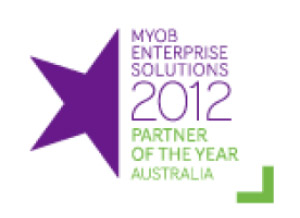7 Steps to manage supply chain disruptions and optimise your inventory
Optimise your inventory by understanding how supply chain disruptions can affect your business.Inventory is essential to the day-to-day operation of your business. If you don’t have the right stock on hand, it becomes increasingly challenging to secure sales. The COVID-19 pandemic has introduced significant and long-lasting disruptions to global supply chains and customer demands. Understanding how these challenges can impact your business allows you to adjust your strategy and optimise your inventory.
What are the challenges that affect stock distribution?
Businesses across Australasia currently face many supply chain challenges that can influence sales and disrupt stock holdings.
Supplier lead times:
Most businesses are experiencing an increase in supplier lead times. This affects your business’s ability to provide customers with the right stock at the right time.
Factors that contribute to extended lead times include:
- Delays in placing orders,
- Inefficient supplier management,
- Port delays and lockdowns, or
- Inaccurate forecasting.
Freight prices
Freight companies are increasing prices to cope with operational costs, port costs, and availability as demand escalates globally. High demand for imported goods and materials also leads to increased air and sea freight prices. Considering alternate freight management models may open new avenues of cost savings for your organisation.
Integrated freight management systems like OpenFreight can automatically find the best price for shipping, with data integrated directly into your MYOB ERP.
A shortage of raw materials
The unprecedented demand in the supply chain over the past 18 months has taken its toll on the shipping container supply, resulting in fewer available around the world. Coupled with the lockdowns and restrictions on warehouse capacities in the countries that supply raw materials, demand has outstripped the supply. Use technology to get ahead of demand planning trends and improve efficiency.
What does this mean for Australasian businesses?
- Australia and New Zealand rely heavily on air and sea freight services to import goods. Suppose there is a delay in manufacturing, port closures, or blank sailings (when the carrier cancels a port or entire shipping route). In that case, businesses are more prone to experience stock-outs and longer buying cycles.
- There are no other options for importing goods – ANZ business must pay these increased costs.
- The shortage of raw materials globally has shifted manufacturers to look locally or source other options for similar materials.
Here are seven tips to help during supply chain disruptions:
7. Monitor inventory risk
Without an understanding of how well your suppliers are delivering against stated lead times and the accuracy of the forecasting process, it can be increasingly difficult to establish the appropriate level of inventory to hold. With unreliable lead times, you increase the risk of under or over-stocking your items. One of the first steps to optimising your stock is to measure and understand these elements.
6. Set inventory levels in line with risk
After establishing the risk in your supply chain, set the safety stock level to buffer this risk and achieve the desired fill rate target. You would need to create an algorithm to compute this by item and warehouse or use sophisticated inventory management software like Netstock to do this for you.
5. Open communication with suppliers.
Suppliers have also been affected by global disruptions. Review your current suppliers and, if necessary, source new reliable suppliers. Ensure you have regular and set communication channels to understand their lead times and to order changes as they occur in real time. This way, you can align your stock reordering levels and reduce your chances of stock-outs.
It is also essential to monitor delivery performance to quickly identify and rank the vendors with the worst delivery performance.
4. Encourage more team collaboration.
It requires a team effort to achieve accurate inventory management. The inventory planner or supply chain manager generally makes the final decision. However, they will need to consult with both sales and marketing departments to accurately visualise future sales projections, industry trends, and any upcoming marketing campaigns.
3. Classify your inventory.
Correctly classified inventory can be broken down into manageable categories such as obsolete, non-stocked, and working stock. Your stock items are then classified further when you set your inventory policies and look at sales velocity and margin contribution. Having these classifications simplifies your stock reporting and refilling policies. Consider a Warehouse Management System (WMS) like eveXso to develop strategies and processes and improve warehouse efficiency.
2. Focus on monitoring and improving forecast accuracy
In challenging times, it is vital to have an accurate forecast. Accurate forecasts help align your inventory levels with demand fluctuations. Using a combination of statistically generated predictions and market knowledge, your forecasts help reduce stock risk.
1. Invest in inventory, freight, and logistics management software.
Using Excel spreadsheets is a standard solution for businesses to use when managing their inventory. If you need to track large quantities of SKUs or stock items that also need to move between warehouses, using an Excel spreadsheet increases the likelihood of data entry errors. Unlike spreadsheets, Netstock provides real-time visibility and supplier performance tracking and is easily scalable as your business grows.
eveXso is a Warehouse Management System (WMS) designed to streamline your picking and packing operations. TIG Freight is a cost-effective shipping solution that prioritises customer experience and satisfaction. It is a full-service freight solution that helps you efficiently manage shipping and distribution. Integrating these best-of-breed add-on solutions into your MYOB business management system improves shipping and logistics efficiency. Gain the benefit of real-time data flow across your entire operation.
Discover strategies to maximise warehouse productivity
Achieving optimal warehouse efficiency in a period of market decline is paramount; any inefficiency directly impacts your customers and bottom line. Taking the steps to maximise productivity now will position your company for success when the market improves.
Watch the webinar recording to discover the strategies and processes to reduce errors, maximise productivity, and increase operational efficiency.
Demand Forecasting for Supply Chains
Accurate demand forecasting is an essential tool for companies to anticipate, adapt, and exceed the demands of both customers and the market. To achieve this, organisations must embrace advanced techniques to get ahead of market trends, optimise inventory levels, and ensure timely product availability to meet demand.
Watch our webinar recording to delve into how demand forecasting can transform your approach to building your inventory strategy.
If you want to explore how inventory management tools can help you optimise your supply chain and manufacturing processes, watch the full recording of our recent webinar with NETSTOCK.
For more information, contact us by emailing sales@kilimanjaro-consulting.com or by calling 1300 857 464 (AU) or 0800 436 774 (NZ). For more interesting video content, visit our Youtube channel.
























